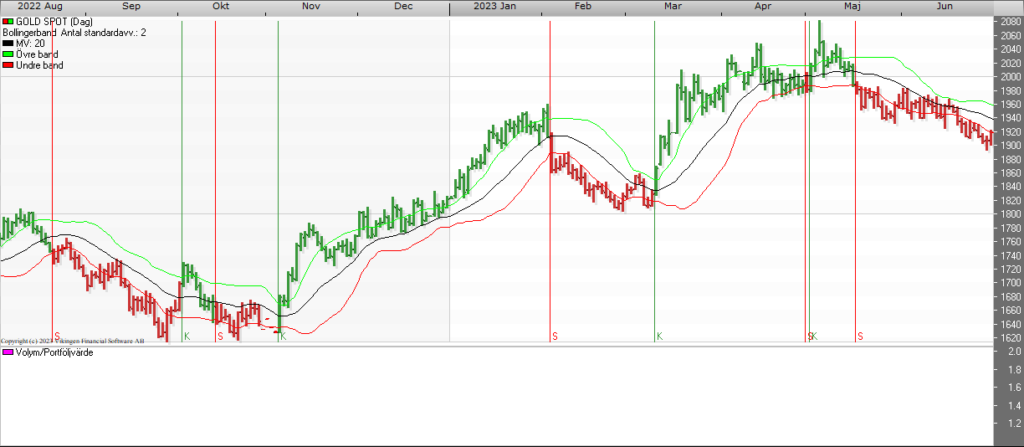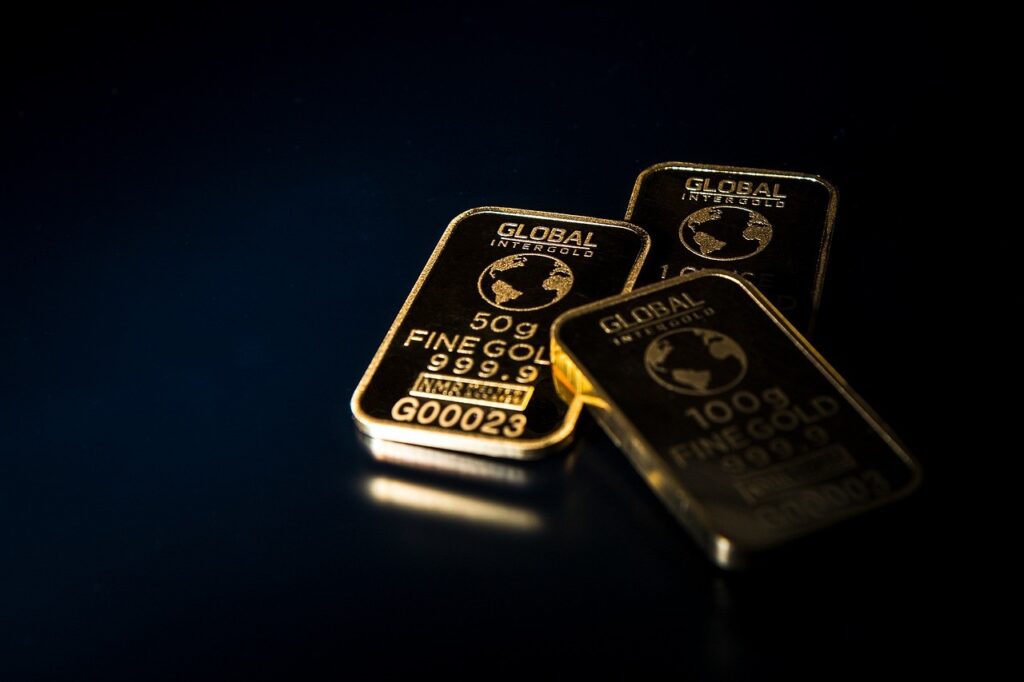What are the seasonal patterns in the gold trade?
When is the best time to buy gold is a question that both we and the gold trading companies we are in regular contact with often face. Gold dealers who sell gold for a living usually ask the questioner a counter-question, whether they have bought their gold and whether they think they have enough gold to feel safe. We’ll leave their sales pitch aside for now, but still choose to list a few different reasons why gold is an alternative and a complement to owning shares and other financial instruments.
When we publish these articles on our site, we are often asked when to buy and how much. We recommend that anyone with an interest in gold ask themselves a number of questions.
– What if we see inflation again, or even worse, hyperinflation?
– If the economic crisis continues or worsens?
– If the uncertainty and fear of the investor community continues, what happens then?
– If world stock markets experience another financial meltdown?
– What if central banks’ attempts to save the world’s economies prove fruitless?
– If government interference in economies continues to increase?
– If the value of the dollar falls sharply?
– If world economies take years to recover from the current crisis?
– Are you confident enough about your own financial situation?
…do you think you have enough gold in your possession? If this happens, we reckon that most of us would wish we had a few extra gold bars or coins tucked away in our safe deposit box.
Let’s assume that one of the questions we asked above raises your interest in gold and that you intend to invest a little in this metal. Then the question arises, when should this gold be purchased? Is it a good time to buy it?
Based on this pattern, the gold looks like a good placement for the fall. In terms of timing, it is better to take a closer look at the technical analysis of gold provided by others on a regular basis than to rely solely on this article.
Bear in mind that gold does not provide the investor with a return or growth, but is instead a matter of ‘speculation’ in stable value preservation. This can be done with or without a premium. In today’s economy, when central banks are running hot and new money is being created and interest rates are minimal, we believe there are good fundamental reasons to invest in gold. As we show in this article, summer has not been a good time to own gold, but we believe it is a good time to buy it.
In addition to direct investment in physical gold, other options include Exchange Traded Funds (ETFs) and gold producing companies such as Yamana, Minefinders, Barrick Gold and the Swedish company Lappland Goldminers. Even for gold-producing companies, there are ETFs to trade, such as the one called GDX. However, we have chosen not to focus much on either company, whether producing or exploring, in this report. We have also chosen not to write much about ETFs so that this article does not become too long.
What about shares in gold-producing companies? Studies show that July and October were by far the weakest months for gold stocks during this rally, at least as measured by the performance of the AMEX Gold Bugs Index. It has also been the very best time to buy these shares.
However, remember that these are trends and an average, so they are not ‘truth’. There are examples of June months when the price of gold shares has risen. Axier recommends that anyone intending to buy gold stocks should instead look at the technical analysis produced and not use this chart to buy with the hope of immediate profits.
Instead, we argue that the pattern should be used as a way to prepare for a weaker gold price and an opportunity to buy gold, either in the form of bars and coins, or in the form of gold stocks, before it rebounds. It may be that this fall will be the last we see gold trading below USD 2,000 per ounce.
Consider that we are still in a weak economy. If and when it becomes clear that the good times have not returned and are not likely to do so in the foreseeable future, the whole sentiment should be able to move quickly. Gold has historically proven to be one of the very best ways to preserve capital during a financial Armageddon. In fact, if you look back to last year, gold was one of the few investment classes that actually rose in the spring.
Seasonal patterns
There are seasonal patterns in gold trading, mainly related to the jewelry market.
However, these patterns vary between different countries, cultures and religions. Nevertheless, the strongest demand tends to occur in the fourth quarter of the year and, to a lesser extent, in the first three months of the year. The main periods to take into account are:
Western world – Christmas
Islamic world – Eid Al Fitr, which marks the end of Ramadan, is a celebration when gold is given away. Because the Islamic year is ten or eleven days shorter than the calendar year we are used to in the West, the timing of Ramadan varies. This year this festival has already been, and in 2024 this festival will take place between March 10 and April 8. Eid al-Adha (Festival of Sacrifice) takes place 70 days after Ramadan and is also a celebration around which gold is bought and given away. This year, the holiday ended on July 1. Pilgrimages to Mecca and Medina also involve the purchase of large amounts of gold. The main pilgrimage period, the Haj, falls around the period of Eid al-Adha.
India – Interest in buying gold is at its peak during the wedding season and all the festivals that vary from region to region. The biggest festival is Diwali, which usually takes place around the end of October/November. The wedding season varies between the different regions, but occurs between November and May, with a break from mid-December to mid-January.
China and the Far East – Interest in gold usually increases during the Chinese New Year, Chung Hay Fat Choy, which occurs in late January and early February.
Turkey – Demand peaks in the third quarter of the year due to the tourist season. Turkey is also one of the world’s largest producers of jewelry.
The effects of a festival are normally felt much earlier than the actual date because buyers show up much earlier than that as purchases are made in advance. In many cases, the final end customers are so numerous that wholesalers and retailers have had to build up a stock beforehand.
Those who intend to take advantage of the seasonal ones and buy just before and then sell at a large profit will be disappointed. The effects of these festivals and celebrations are well known to gold market participants and are thus priced in. Note also that there are a large number of other effects in the market beyond supply and demand that affect the price picture.

Source: Vikingen.se
About the Viking
With Viking’s signals, you have a good chance of finding the winners and selling in time. There are many securities. With Viking’s autopilots, price data, tables and stock prices, you can sort out the most interesting ETFs, shares, options, warrants, funds, etc.
Click here to see what Vikingen offers: Detailed comparison – Stock market program for those who want to become even richer (vikingen.se)













